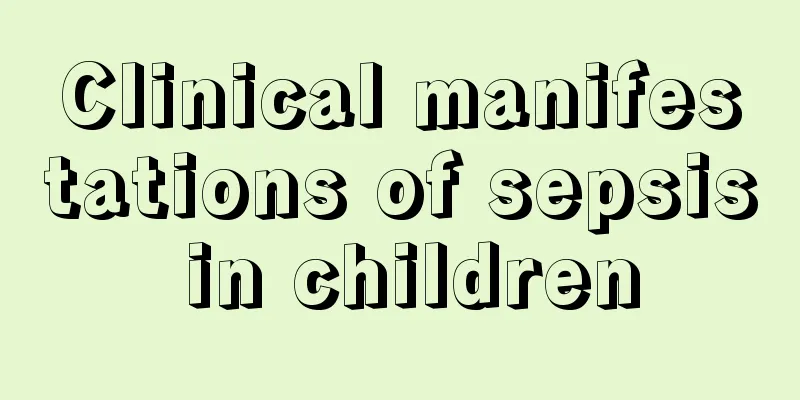Clinical manifestations of sepsis in children

|
For newborns, when they first come into this world, they have to face many "challenges". Especially various diseases, which are a huge threat to infants whose resistance is not strong enough. Among them, sepsis is a common disease in children. Once you get the disease, it is difficult to cure. So, what are the symptoms of neonatal sepsis? The clinical symptoms of different types of sepsis are different. Septic shock is caused by toxins and cytokines produced by certain bacteria, which cause sepsis and cause the patient's blood pressure to drop to life-threatening low levels. Septic shock is common in newborns, people over 50 years old, and people with compromised immune systems. Sepsis is more dangerous if it occurs in patients with low white blood cell counts, such as cancer patients, those undergoing anti-cancer chemotherapy, and those with chronic diseases such as diabetes or cirrhosis. In septic shock, blood pressure drops as vasodilation occurs, despite an increase in heart rate and cardiac output. The permeability of blood vessels may also increase, causing fluid components in the blood to leak into tissues and cause edema. Blood flow to the body's vital organs, especially the kidneys and brain, is reduced. Finally, blood vessels constrict in an attempt to raise blood pressure, but because the heart is pumping less blood, blood pressure remains low. The first signs of septic shock, even more than 24 hours before the blood pressure drops, are altered mental status and confusion, caused by reduced blood flow to the brain. The amount of blood pumped by the heart increases, but blood pressure decreases due to vasodilation. Patients often have faster breathing, which causes them to exhale too much carbon dioxide and reduce the carbon dioxide content in their blood. Early symptoms include chills, a rapidly rising temperature, hot and flushed skin, and decreased urine output despite increased blood output. In the later stages, body temperature often drops below normal. Further worsening of shock can lead to failure of various organs, including the kidneys (manifested by low urine output), lungs (manifested by difficulty breathing and decreased blood oxygen levels), and heart (manifested by fluid retention and edema), and clotting can occur in the blood vessels. Blood tests revealed an increase or decrease in white blood cell count and a decrease in platelet count. Blood levels of metabolic products (such as urea nitrogen) continue to increase in renal failure. An electrocardiogram shows an irregular heartbeat, indicating inadequate blood flow to the heart muscle. Blood cultures can identify the infecting bacteria. |
<<: What to do if you have uneven chest
>>: Is sepsis serious in children?
Recommend
How to treat mental retardation in teenagers
Nowadays, there are many people in life who have ...
How to regulate the phlegm in the throat of children that they always feel?
Winter is a very dry season with relatively littl...
Why is the baby breathing heavily?
New parents always put all their attention on the...
What is the cause of the red spots on the child's feet?
After a child is born, the little feet are very t...
What can children eat to help them grow taller?
A child’s height has a lot to do with both innate...
Why does a three-year-old child cry when sleeping at night?
Anyone who has to take care of children knows how...
From whom did my daughter inherit her personality?
After they are born, all children have personalit...
What are the effects of talking loudly on newborns?
The organs of a newborn are not fully developed a...
How to treat strawberry hemangioma in baby?
Generally speaking, the skin of a newborn baby is...
What preparations should be made for teething in six-month-old babies?
The birth of every baby is a surprise to a family...
Is it normal for a baby to not have a rash?
Roseola is a common rash in infants and young chi...
Why are babies prone to diarrhea in summer?
Every change in the baby after birth is watched b...
What does it mean when a newborn baby has small red spots?
During the development process, babies often have...
What are the common sense of children's health care
Health preservation is very common nowadays. Ther...
What is the correct way to give cough medicine to young children?
It is very common for children to cough. Coughs a...









